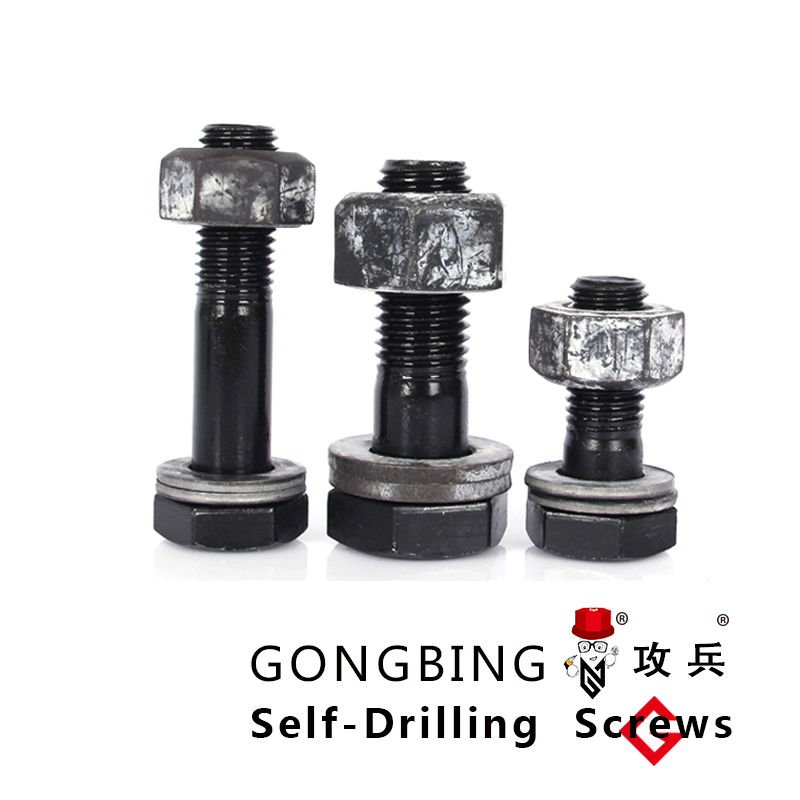t head foundation bolt
The Importance of T-Head Foundation Bolts in Structural Engineering
In the realm of structural engineering, the integrity and stability of a construction project heavily rely on the selection of appropriate fastening systems. Among various fastening components, T-head foundation bolts have gained significant attention due to their unique design and functionality. These specialized bolts are crucial in securing structures to their foundations, which is especially important in environments prone to earthquakes or extreme weather conditions.
What Are T-Head Foundation Bolts?
T-head foundation bolts are characterized by their 'T' shaped head, which provides a larger surface area for effective load distribution. The design allows the bolts to anchor securely into concrete or masonry structures, making them ideal for applications such as the base plates of steel columns, machinery, and other heavy equipment. The 'T' shape helps to avoid vertical movement of the bolt, ensuring that it remains securely fastened over time.
Applications in Construction
In construction, T-head foundation bolts serve multiple purposes. They are frequently used in the following applications
1. Base Plates for Steel Structures When erecting steel buildings, T-head bolts are essential for attaching base plates to concrete foundations. This connection is vital for ensuring the stability of the entire structure, particularly in areas subject to seismic activity.
2. Wind Turbine Foundations The renewable energy sector employs T-head bolts to secure wind turbine foundations. Given the high stress these structures endure from wind forces, T-head bolts provide the necessary strength and stability.
3. Machinery and Equipment Heavy machinery often requires sturdy anchors to ensure operational safety. T-head foundation bolts facilitate this by securing the machinery to its foundation, preventing movement that could lead to failure or accidents.
t head foundation bolt

4. Bridges and Overpasses In the construction of bridges and overpasses, T-head bolts can be used to connect different structural components. Their reliable anchoring capabilities ensure that these vital infrastructures can withstand substantial loads and environmental pressures.
Advantages of T-Head Foundation Bolts
One of the main advantages of T-head foundation bolts is their ability to provide a strong connection that reduces the risk of uplift, a common concern in various engineering applications. Their design minimizes the chance of the bolt pulling out of the foundation, a critical factor in scenarios where vertical forces are at play.
Moreover, T-head bolts can be installed relatively easily and quickly, allowing for efficient construction processes. The 'T' head design enables technicians to use standard tools for tightening and loosening, which enhances the speed of assembly while maintaining high safety standards.
Material Considerations
T-head foundation bolts are typically manufactured from high-strength steel, ensuring they can withstand the enormous forces they encounter in structural applications. In corrosive environments, such as marine or chemical sites, bolts can be sourced with protective coatings or made from stainless steel to prolong their lifespan and maintain structural integrity.
Conclusion
In conclusion, T-head foundation bolts are an integral component of modern structural engineering. Their unique design and robust functionality grant them a diverse range of applications, from securing steel structures to anchoring machinery, all while contributing to the safety and longevity of constructions. As engineering practices evolve, the role of T-head foundation bolts will continue to be vital, reinforcing the importance of selecting the right fastening solutions in creating resilient infrastructures. Investing in high-quality T-head bolts not only ensures compliance with engineering standards but also enhances overall safety, efficiency, and durability – core principles that are paramount in any construction project.
-
Weatherproof Plastic Expansion Anchors for OutdoorNewsJun.06,2025
-
Sustainability in the Supply Chain: Eco-Friendly TEK Screws ProductionNewsJun.06,2025
-
Load-Bearing Capacity of External Insulation FixingsNewsJun.06,2025
-
Double Head Bolts: Enhancing Efficiency in Industrial MachineryNewsJun.06,2025
-
Corrosion Resistance in Chipboard Screws: Coatings for Wholesale DurabilityNewsJun.06,2025
-
Butterfly Toggle Bolts : Enhancing Structural ResilienceNewsJun.06,2025
